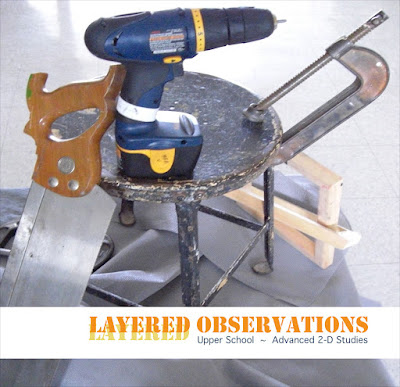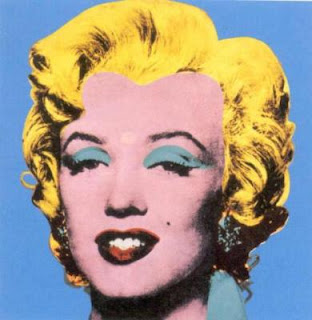Tuesday, September 29, 2009
Friday, April 17, 2009
Layered Observations
 The Upper School Advanced 2-D Studies class recently arranged a still-life in the studio that included various tools used in woodworking. The arrangement included items such as a circular saw, power drill, handsaw, c-clamps and more. The goal of the pastel composition was to 1) initially focus on contour or the outermost shape of regions in the still-life and 2) to compose shaded more detailed renderings within the artist's contour marks. This act was repeated over a two week period, resulting in a layered composition. The project prompted student-artists to hone their observational eye, to catch both rudimentary, non-dimensional shapes and work at rendering volume and dimensionality through shading. Please enjoy our "Layered Observation" slide show to your right!
The Upper School Advanced 2-D Studies class recently arranged a still-life in the studio that included various tools used in woodworking. The arrangement included items such as a circular saw, power drill, handsaw, c-clamps and more. The goal of the pastel composition was to 1) initially focus on contour or the outermost shape of regions in the still-life and 2) to compose shaded more detailed renderings within the artist's contour marks. This act was repeated over a two week period, resulting in a layered composition. The project prompted student-artists to hone their observational eye, to catch both rudimentary, non-dimensional shapes and work at rendering volume and dimensionality through shading. Please enjoy our "Layered Observation" slide show to your right!
Wednesday, March 18, 2009
Tuesday, March 17, 2009
Tuesday, February 24, 2009
7th Grade: Andy Warhol/Color Unit

This is one of my favorite color projects - Andy Warhol Color Portraits.
Based on his two-layer silkscreened work, this adaptation of the process presents students to not only Warhol but to color theory and an introduction to Photoshop CS3 where they are able to familiarize themselves with the workspace/interface and experiment with some more complicated elements such as color correction and layering create some of their own iconic portraits.
Wednesday, February 18, 2009
8th Grade "Chuck Close" Portraits: Value study
Each year following an introduction to gridded self-portraiture that includes a book & video discussion about contemporary artist, Chuck Close, I take pictures of my 8th grade students with a digital camera, and print the pictures in grayscale to at least 6 inches by 8 inches. Students draw a 1/4-inch grid over the entire photograph, and then create a ½ -inch grid on drawing paper to double the size of the image. They use numbers and letters along the sides of the gridded photograph, and corresponding numbers and letters along the sides of their paper. Squares may be divided further (into quarter- and half-inches) if necessary.
Students begin by establishing the contour lines around their head and shoulders, and then use the grids (like coordinates on a map) to "plot" and place their features. Most students find it helpful to use a cover sheet over their photograph to see a "row" of squares or to isolate individual squares.
I encourage them to turn the photo and paper 90-degrees about every 10 minutes to facilitate their "right-brained" ability to see spatial relationships and to avoid the predictable and unavoidable "left-brained" concerns about drawing their eyes or a mouth or an ear. I tell them they're not DRAWING body parts--they're simply drawing lines! :-)
Students begin by establishing the contour lines around their head and shoulders, and then use the grids (like coordinates on a map) to "plot" and place their features. Most students find it helpful to use a cover sheet over their photograph to see a "row" of squares or to isolate individual squares.
I encourage them to turn the photo and paper 90-degrees about every 10 minutes to facilitate their "right-brained" ability to see spatial relationships and to avoid the predictable and unavoidable "left-brained" concerns about drawing their eyes or a mouth or an ear. I tell them they're not DRAWING body parts--they're simply drawing lines! :-)
Tuesday, February 17, 2009
Subscribe to:
Comments (Atom)


